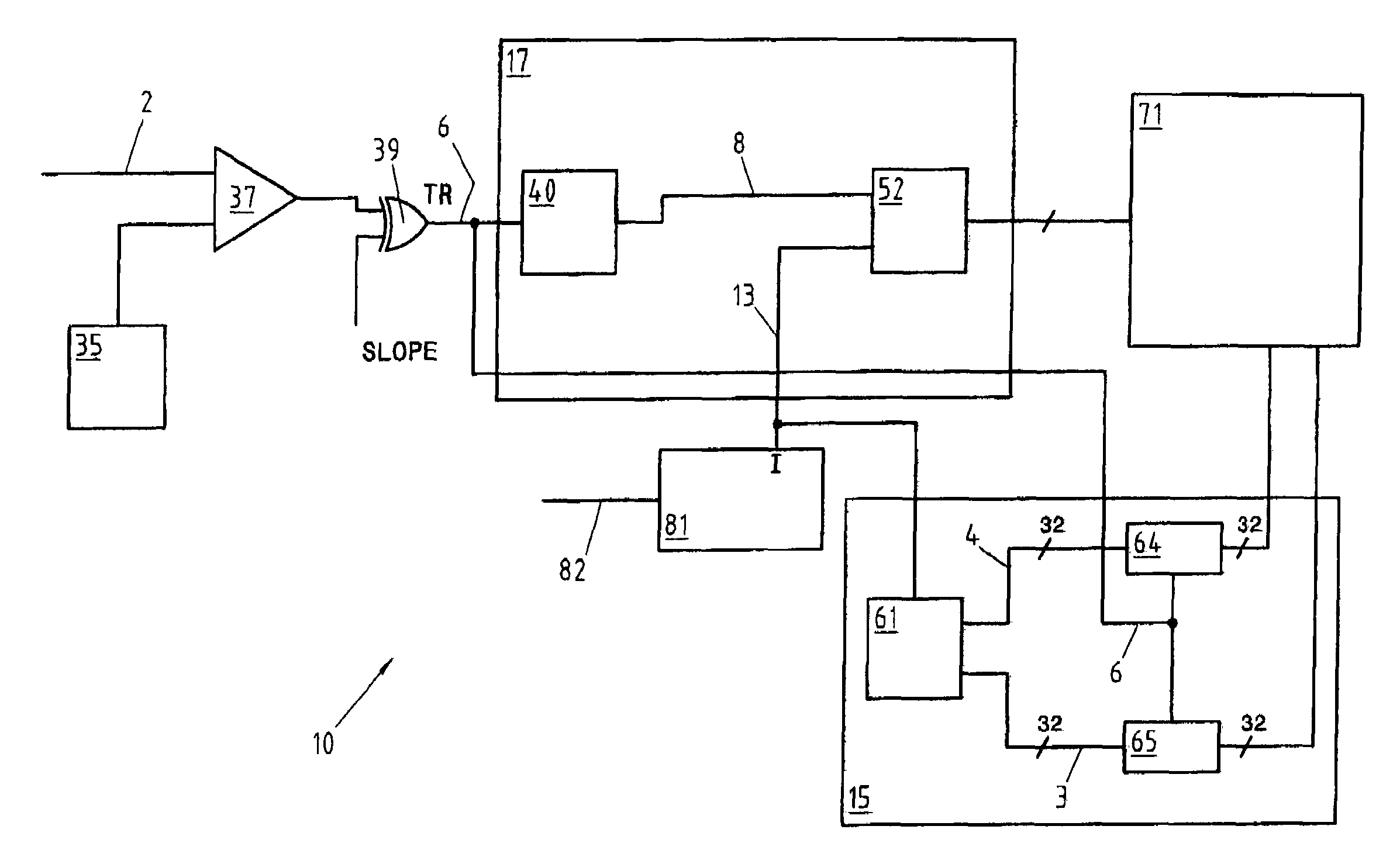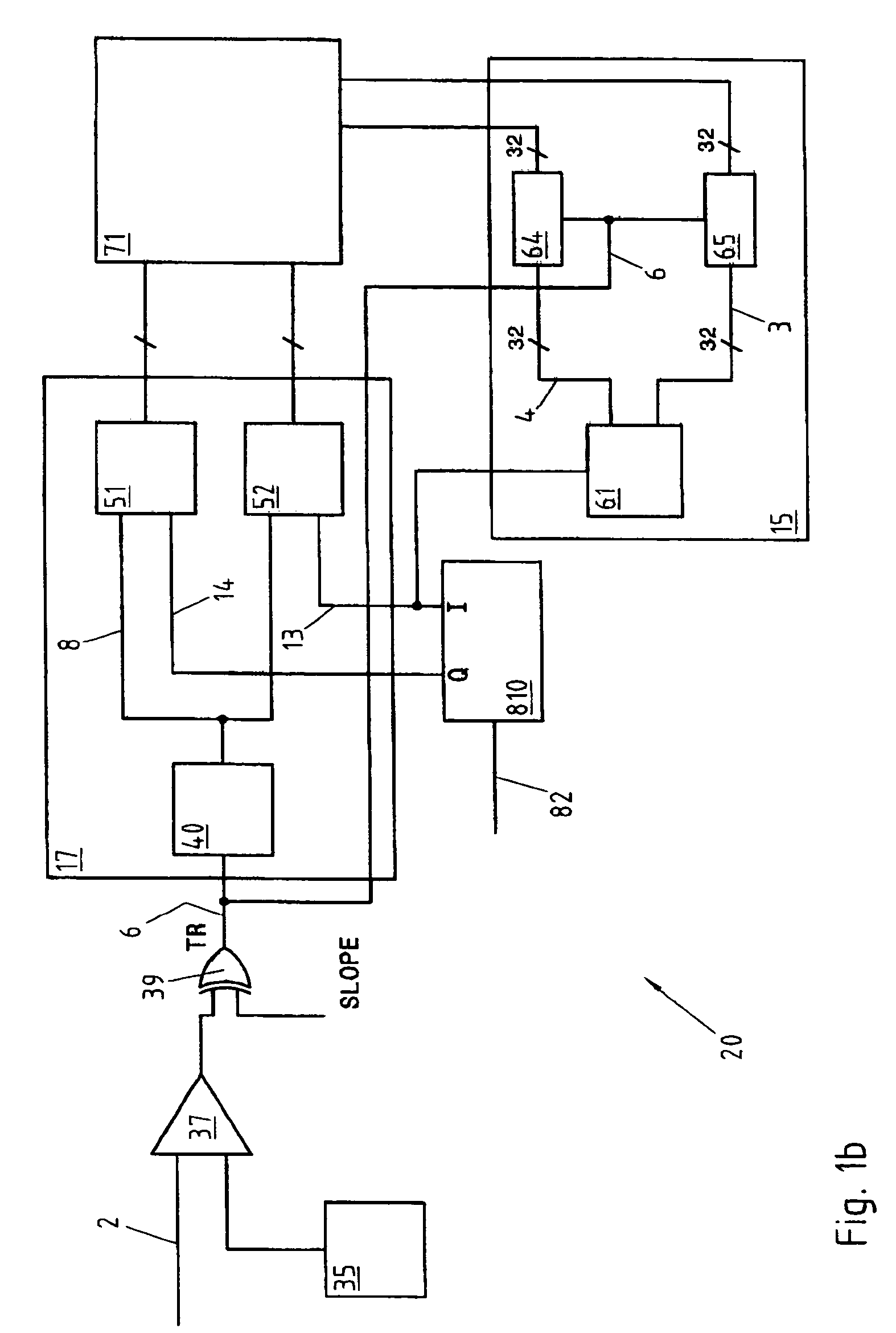Time converter
a converter and time technology, applied in the field of time converters, can solve the problems of limited measurement accuracy, difficulty in realizing current sources that are constant, and the level of precision cannot be achieved
- Summary
- Abstract
- Description
- Claims
- Application Information
AI Technical Summary
Benefits of technology
Problems solved by technology
Method used
Image
Examples
first embodiment
[0033]In the invention, described with reference to FIG. 1a, the generator 81 produces the sinusoidal signal 13 serving as time base for the converter 10. The sinusoid 13 is generated from an external clock signal 82, as indicated in FIG. 1a, or by a local time base generator, not represented. The frequency of the signal 13 is chosen according to the application and to the desired temporal resolution, within the limits imposed by the speed of the components used. In a typical case, a frequency of 100 MHz can be adopted although the present invention obviously also comprises devices with a higher or lower rate, as the case may be.
[0034]The digital trigger signal 6 is sent to a coarse measuring system 15, described further below in connection with FIGS. 1a and 2a. The coarse measuring circuit 15 comprises the real time counter 61 and the two registers 64, 65.
[0035]The real time counter 61 counts the periods of the sinusoidal signal 13 and is used to feed the two buses 3 and 4, whose c...
second embodiment
[0069]the present invention is now described with reference to FIG. 1b.
[0070]In this embodiment, the inventive time converter 20 comprises a generator 810 that produces the two sinusoidal signals 13 and 14 in quadrature that serve as time base for the converter 10. The first sinusoid 13 is also designated by I (In phase) and the second sinusoid 14 by Q (Quadrature). The signals 13 and 14 are generated from an external clock signal 82, as can be seen in FIG. 1, or by a local oscillator, not represented. The frequency of the signals 13 and 14 is chosen as a function of the resolution one wishes to achieve, as in the first embodiment already described.
[0071]The generator of the signals I and Q 810 is now described with reference to FIGS. 3 and 4. The reference signal 82 originating from outside or from a local oscillator is applied to the inputs of the two flip-flops 83, 84 to generate two square signals offset by 90°, whose frequency is half that of the signal 82. The two identical b...
PUM
 Login to View More
Login to View More Abstract
Description
Claims
Application Information
 Login to View More
Login to View More - R&D
- Intellectual Property
- Life Sciences
- Materials
- Tech Scout
- Unparalleled Data Quality
- Higher Quality Content
- 60% Fewer Hallucinations
Browse by: Latest US Patents, China's latest patents, Technical Efficacy Thesaurus, Application Domain, Technology Topic, Popular Technical Reports.
© 2025 PatSnap. All rights reserved.Legal|Privacy policy|Modern Slavery Act Transparency Statement|Sitemap|About US| Contact US: help@patsnap.com



